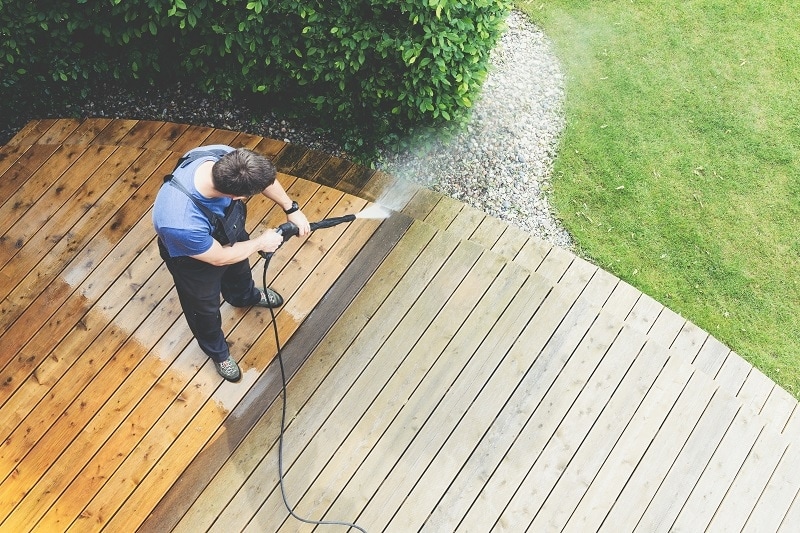Effective Washing Tips for Pressure Cleaning Different Surfaces
Effective Washing Tips for Pressure Cleaning Different Surfaces
EXTERIOR CLEANING SERVICE PROCESSESBASIC HOME MAINTENANCECURB APPEALPRESSURE WASHING SERVICES


Pressure Cleaning Asphalt Roofing
Maintaining the cleanliness of an asphalt roof with pressure cleaning necessitates meticulous attention to detail and adherence to best practices to avoid damage. Using a low-pressure setting is imperative to preserving the integrity of the roofing material. High pressure can dislodge granules that constitute the shingle surface, leading to premature wear and potential leaks. A setting of 30-40 PSI is generally recommended for cleaning asphalt shingles.
The choice of detergent is another crucial factor. Employing a detergent specifically designed for roof cleaning can effectively remove dirt, grime, and organic growth without compromising the shingles' protective components. Products containing sodium hypochlorite are commonly used, but always ensure they are labeled safe for asphalt shingles. These detergents are adept at breaking down moss, algae, and lichen that accrue over time.
When addressing moss and algae infestations, start by applying the detergent mixture and allowing it to sit for 15-20 minutes to fully penetrate and loosen the growths. After the waiting period, use a low-pressure rinse to wash away the residues. Avoid using any form of abrasive tools or high-pressure streams, as these can cause significant damage to the shingles.
It's pivotal to perform a thorough rinse of the roof after the cleaning solution has done its job. Any remaining detergent residues can lead to streaking or potential damage to the roofing material. A comprehensive rinse ensures that all cleaning agents are removed, thereby preserving the roof’s structural integrity and appearance.
Moreover, safety should be a top priority when working on elevated surfaces. Always use secure, non-slip shoes and a safety harness to prevent falls. Position the pressure washer on a stable surface and never lean over the edge of the roof. If there is any doubt about safely executing the task, consider hiring a professional with the appropriate expertise and equipment.
Concrete, Brick, and Wooden Decking: Techniques for Durable Surfaces
When it comes to pressure cleaning various surfaces like concrete, brick, and wooden decking, utilizing the appropriate techniques is vital for maintaining the longevity and aesthetic appeal of the materials. Each surface type requires specific handling to achieve optimal results without causing inadvertent damage.
Concrete and brick surfaces demand robust cleaning methods while ensuring the pressure level is carefully regulated. Setting the pressure too high can result in surface etching, compromising the integrity of the material. A recommended approach is to use a pressure setting between 2000 to 3000 PSI. Employing a rotary nozzle significantly enhances the efficiency of the cleaning process; the nozzle's spinning water jet can more effectively dislodge embedded dirt and stains. Prior to power washing, it is advisable to apply a pre-washing treatment to target stubborn stains such as oil and rust. Specialized detergents can break down these contaminants, making them easier to wash away.
For wooden decking, a gentler approach is essential to prevent splintering and structural damage. Using lower pressure settings, preferably around 500 to 1200 PSI, helps to maintain the wood's integrity. Additionally, it is crucial to wash along the direction of the wood grain. This technique minimizes surface disruptions, preserving the natural form of the wooden planks. To further protect the surrounding vegetation and soil, it is recommended to use eco-friendly cleaning solutions. These biodegradable products ensure that the cleaning process is environmentally responsible while effectively removing mildew, dirt, and stains.
By implementing these tailored pressure cleaning strategies for concrete, brick, and wooden decking, one can achieve thorough cleaning outcomes while preserving the material's durability and appearance. Ensuring the correct pressure settings, utilizing appropriate nozzles, and incorporating eco-friendly solutions will contribute to the effective and sustainable maintenance of these diverse surfaces.
Gentle Approaches for Vinyl Siding and Painted Surfaces
Maintaining the pristine look of vinyl siding and painted surfaces requires a careful and gentle approach during pressure cleaning. Utilizing a wide spray pattern and low-pressure settings is crucial to prevent damage such as peeling or cracking of the paint. When setting up your pressure washer, ensure the nozzle you use has a spray angle between 25 to 40 degrees. This broader sweep reduces the force exerted on the surface, thereby safeguarding its integrity.
The type of detergent used plays a significant role in effective cleaning without causing harm. Opt for detergents specifically formulated for painted surfaces, ensuring they are both non-abrasive and capable of tackling mildew, grime, and other contaminants. These detergents not only clean effectively but also help maintain the longevity and appearance of your surfaces. Equally important is to follow the manufacturer's instructions regarding the dilution and application of the detergent.
Before proceeding with the entire area, it is advisable to test the cleaning process on a small, inconspicuous section. This preliminary step can help identify any adverse reactions between the detergent and the surface, allowing you to adjust your approach if necessary. While pressure cleaning, maintain a consistent distance of about 3-4 feet from the siding, moving the wand in a smooth, sweeping motion. This technique minimizes the risk of gouging and ensures an even clean.
Occasionally, you might encounter stubborn spots that resist standard cleaning methods. For these areas, employing a soft brush can be highly effective. Gently scrubbing the spot with the brush, while applying moderate pressure, can dislodge the buildup without damaging the underlying surface. Always remember to rinse thoroughly after brushing to remove any residual detergent and grime. By following these steps, you can achieve a spotless and damage-free clean for your vinyl siding and painted surfaces.
